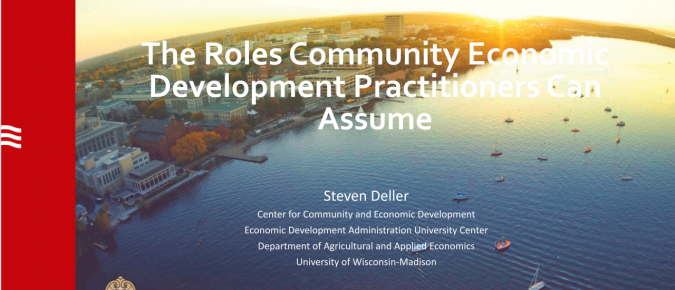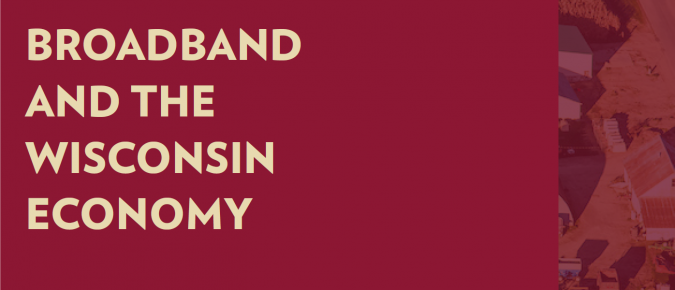Nonemployer establishments, sole proprietorships and partnerships without any paid employees, are an important part of the country’s economy. As of 2018, they made up a large and quickly growing share of businesses in the United States at 77% of the total while the other 23% of establishments were employer businesses [1]. Given that nonemployer establishments are businesses without employees, they are predominantly independent contractors who work for themselves or small businesses operated only by the owner(s) or unpaid members of their family.
Summary May 2021 — Industry recruitment. Small business support. Public-private partnerships. These strategies characterize waves of economic development in the United States. Are we in the 4th wave of economic development? If so, what does this mean for economic development practitioners? Steve Deller, professor in agricultural and applied economics and community economic development specialist, discusses […]
Summary May 2021 — What type of community economic development practitioner are you? Do you emphasize the “C” (i.e., community)? The “E” (i.e., economic)? Or, the “D” (i.e., development)? Steve Deller, professor in agricultural and applied economics and community economic development specialist, describes several roles community economic development practitioners can assume. Webinar Recording Additional Materials […]
When one thinks about the term “business climate”, factors such as taxes, regulations, and unionization come to mind. These items tend to be viewed as potential costs that businesses face when making investment decisions. Anything that is viewed as increasing the costs of business operations is considered bad for the business climate of a community or region. To foster economic growth and development the business climate of the community or region must be enhanced. The logic follows that strategies or policies that reduce tax burdens, limit or reduce regulations, or weaken the strength of labor unions (e.g. Right-to-Work laws) will enhance business climate and foster economic growth and development.
Using the latest research and data specific to Wisconsin’s rural communities and regions, we discussed the Wisconsin rural economy with a focus on innovative strategies that foster economic opportunities and well-being. The summit included an overview of historical and current trends in the Wisconsin rural economy, a look at lessons learned from rural communities, and a focus on proactive strategies that Wisconsin’s smaller and rural communities can implement.
EXECUTIVE SUMMARY January 2021 — In this study we explore issues related to broadband coverage and importance of coverage to community well-being. Several key conclusions include: Fact Sheets Broadband Access and Affordability How Available is Broadband in Wisconsin? Disconnected: Households Without Any Internet Broadband Connectivity and Health Outcomes Increasing Broadband Adoption Broadband and […]
Childcare was a challenge for parents before the pandemic and has only become more difficult in recent months. During the pandemic, as much as 60% of childcare providers closed and stopped providing childcare (Bipartisan Policy Center, 2020). While many of those closures were temporary, a recent state-level study estimates that, in absence of additional aid, 30% of the childcare supply in Wisconsin could be permanently lost if providers are closed for more than two weeks without revenue due to COVID-19.
Restaurants have become a key element in the business mix of downtowns throughout Wisconsin and the U.S. Their growth has helped reestablish downtown as the central social district of our communities and they have been a major employer and a visible example of entrepreneurship at work.
The COVID-19 pandemic has significantly impacted Wisconsin’s economy. When the country reported the first case on January 20th, 2020, there was uncertainty as to how fast and far the virus would spread. On March 11th, the World Health Organization declared a pandemic and on March 16th all Wisconsin public schools were ordered to close while Governor Tony Evers instituted a Safer-at-Home order and closure of all non-essential businesses.
Recent analysis demonstrates that communities of color are disproportionately suffering the health impacts of COVID-19. In Milwaukee County, 29 percent of the population is Black or African American yet Black or African Americans represent 43 percent of COVID-19-related deaths1. Much like the poor health outcomes from COVID-19 are disproportionately suffered by people of color, the economic costs are likely also inequitably distributed across racial and ethnic groups.
Summary June 2020 — Matt Kures and Tessa Conroy discuss the industries and occupations that may be more affected by COVID-19 as the economy begins to reopen. Webinar Recording Explore Our Lunch-n-Learn Series
EXECUTIVE SUMMARY May 2020 — Using 2019 county sales tax data, we examine the strength and weaknesses of Wisconsin retail and service markets through the application of the tools of Trade Area Analysis. Only those counties that have elected to collect the optional county sales tax are included in the analysis. Because sales tax data […]
















